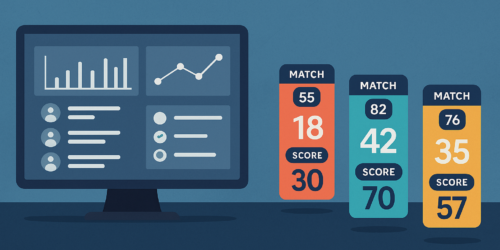What's in this article?
Predictive analytics has fundamentally shifted how sales processes operate, particularly through techniques like predictive lead scoring. By harnessing the power of AI, sales teams can now prioritize leads more efficiently and increase conversion rates. This transition toward data-driven decision-making is vital for competitive businesses eager to optimize their sales strategies and enhance ROI.
Understanding Predictive Lead Scoring
Predictive lead scoring employs AI algorithms to analyze vast amounts of data, identifying patterns that predict future outcomes. These systems rank leads by their likelihood of conversion, allowing sales teams to focus their efforts where they’ll have the most impact. Unlike traditional scoring methods—often driven by gut feeling or rigid rules—predictive models provide objective insights from behavioral signals and historical data.
One company that shifted to predictive lead scoring saw a 30% improvement in close rates within a single quarter by reallocating resources based on customer engagement data and transaction history.
Benefits of Predictive Analytics in Sales
- Improved Lead Prioritization
AI identifies high-converting leads, optimizing time and effort spent by your sales team. - Enhanced Sales Performance
Real-time insights guide reps in personalizing outreach, increasing relevance and effectiveness. - Boosted ROI
Focused sales efforts minimize waste and maximize return. One financial services firm saw a 40% drop in acquisition costs while gaining new clients.
Implementing Predictive Lead Scoring Tools
To integrate predictive analytics into your sales process:
- Ensure Data Integration
Gather and clean data from multiple sources—email, CRM, web behavior—for richer insights. - Check CRM Compatibility
Tools must plug into platforms like Salesforce, HubSpot, or your custom CRM with minimal friction. - Train Sales Teams
Equip teams with the skills to interpret AI-driven scores and translate them into actionable strategies.
While setup may require upfront investment, the payoff in speed and accuracy justifies the effort.
Measuring Predictive Analytics Success
To determine ROI and guide optimization, track:
- Conversion Rates: Measure how lead prioritization improves deal closures.
- Lead Engagement: Monitor how predictive insights affect lead responsiveness and activity.
- ROI Metrics: Compare pre- and post-AI revenue per lead and campaign efficiency.
Sales leaders who leverage these insights are better equipped to refine messaging, segment lists, and optimize channels.
Frequently Asked Questions
What is the ROI of predictive lead assignment?
Predictive assignment boosts efficiency by reducing wasted outreach and increasing conversion rates—often improving ROI within the first quarter.
How do predictive scoring tools integrate with CRMs?
Most use APIs that sync in real-time with popular CRMs to ensure seamless lead tracking and analytics.
Can leads be scored by urgency or profile?
Yes, predictive models can weigh urgency, lifecycle stage, or persona fit to customize scoring.
How much data is needed?
While more data increases accuracy, even moderate data sets can fuel high-performing predictive models.
What are the common challenges?
Data silos, training gaps, and integration friction can slow rollout—proactive planning and vendor support mitigate these risks.
A Logical Next Step for Sales Teams
Implementing predictive lead scoring allows sales teams to work smarter, not harder. The result? Increased conversions, faster sales cycles, and improved revenue metrics.
👉 Schedule a demo with ProPair to see how predictive analytics can elevate your sales strategy.



